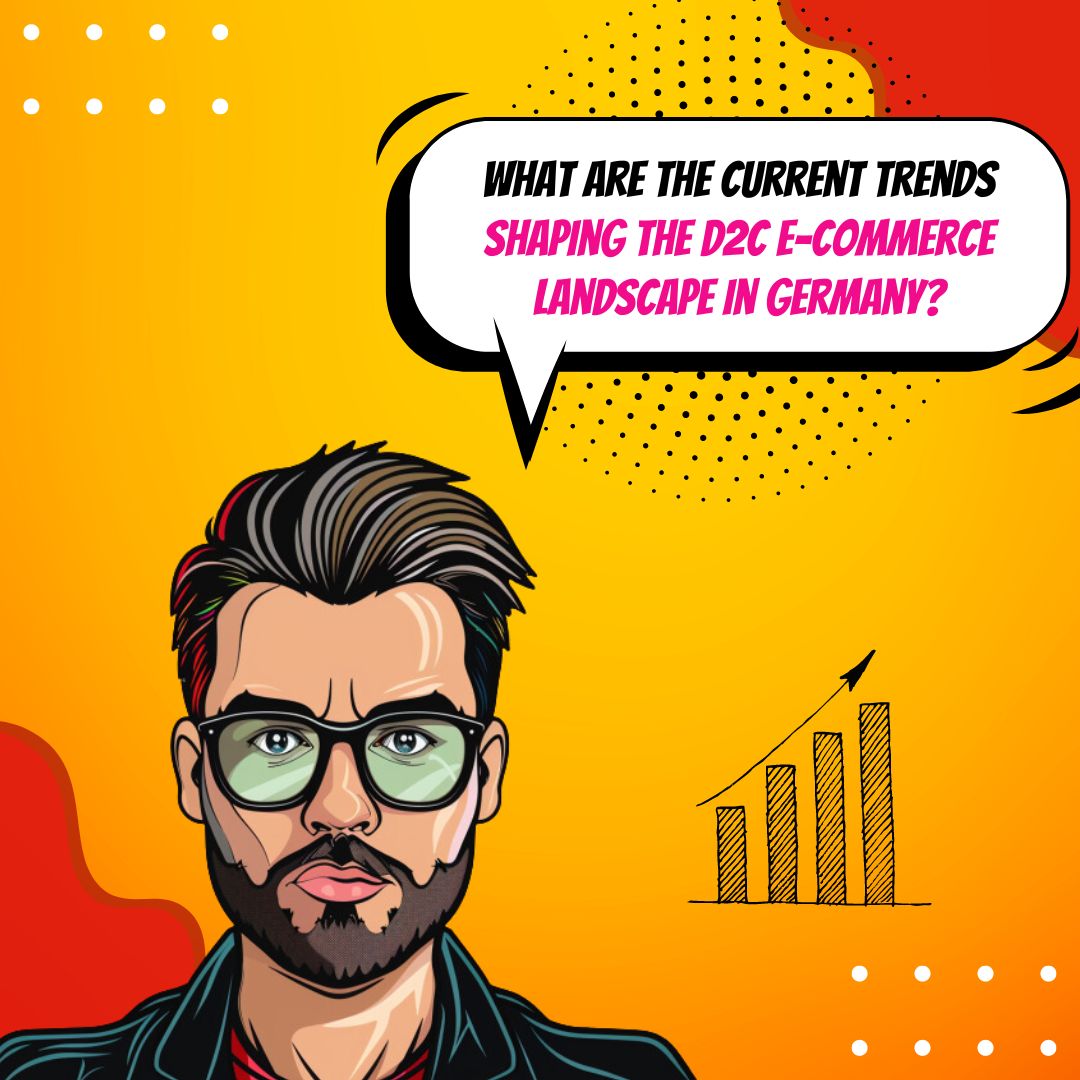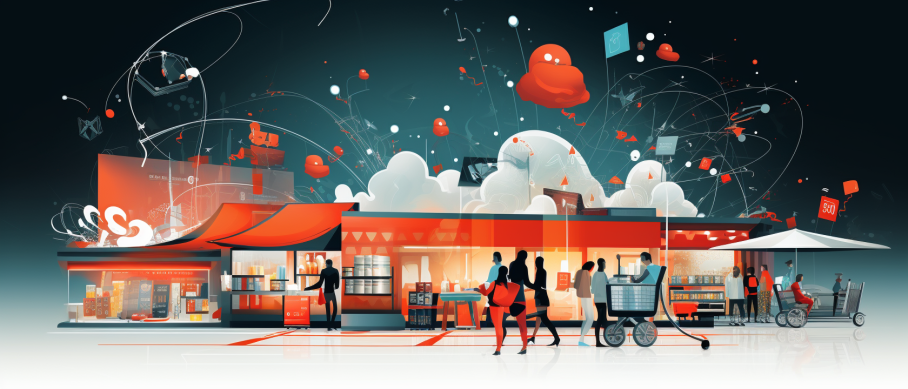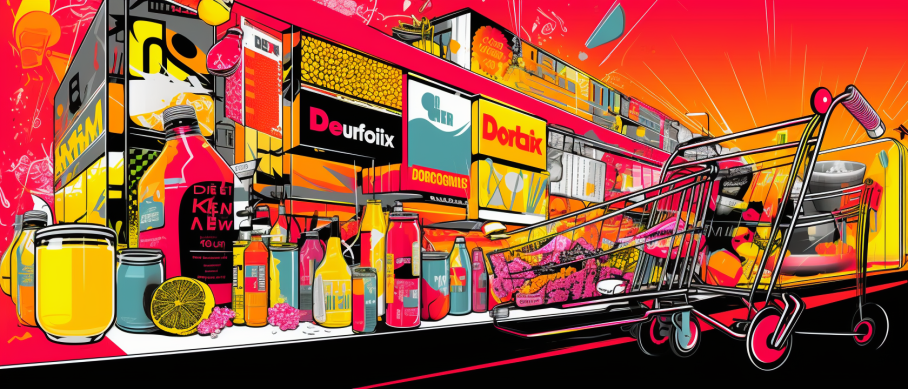Key Takeaways
✅ Rapid Growth and Increasing Popularity: Direct-to-Consumer (D2C) e-commerce in Germany has experienced significant growth, with a projected compound annual growth rate (CAGR) of 15.5% from 2020 to 2024, according to Statista. This surge is fueled by the growing preference for online shopping and the convenience it offers.
✅ Personalization and Customer Experience: German consumers treasure personalized experiences and high-quality customer service. For D2C businesses, focusing on tailored offerings and seamless interactions, such as easy returns and fast delivery options, is crucial for success.
✅ Expansion into New Categories: D2C e-commerce in Germany provides opportunities to venture into new areas like health and wellness, sustainable products, and subscription services. Consumers increasingly seek products that align with their values, driving demand for innovative and niche offerings.

Introduction
Can your brand tap into the booming D2C e-commerce wave in Germany and thrive in a highly competitive market? In today’s global economy, Germany stands out as a key player in the D2C (Direct-to-Consumer) landscape. Driven by shifting consumer behavior and a growing preference for personalized shopping experiences, Germany’s D2C market presents unique opportunities for businesses ready to adapt and innovate.
This article delves into the current trends and opportunities in Germany's D2C e-commerce scene. Learn how to navigate the challenges, leverage modern strategies, and uncover actionable insights that can maximize your brand’s growth potential. Whether you are a business owner looking to expand or a marketer aiming to keep up with the latest trends, we've got you covered.
Top Statistics
| Top Statistics | Insight |
|---|---|
| E-commerce Sales Growth: E-commerce sales in Germany reached €79.2 billion in 2020, with an estimated growth of 11.4% in 2021. (Source: Statista) | This shows that e-commerce in Germany is robust and continuing to expand, presenting significant opportunities for businesses aiming to establish or grow their online presence. |
| D2C Market Growth: D2C e-commerce is expected to grow by 13% in 2021, reaching €6.4 billion, and is projected to grow at a CAGR of 10.5% from 2021 to 2025. (Source: GlobalData) | This projection highlights the increasing consumer preference for buying directly from brands, indicating a lucrative opportunity for brands. |
| Consumer Online Purchasing: In 2020, 83% of German consumers made online purchases, with an average of 16.1 purchases per person. (Source: Statista) | The high penetration rate signals a mature and active online consumer base, which is vital for any D2C strategy. |
| D2C Market Forecast: By 2025, the D2C e-commerce market in Germany is expected to reach €10.4 billion, with a CAGR of 10.5%. (Source: GlobalData) | This forecast emphasizes the strong growth trajectory of the D2C sector, making it an attractive market for investment and expansion. |
| Mobile Shopping Trend: In 2021, 53% of German consumers are expected to use mobile devices for online shopping. (Source: Statista) | This statistic underscores the importance of mobile-friendly platforms in capturing the modern consumer and staying relevant in the competitive market. |
German E-commerce Market
The German e-commerce market has seen significant growth, driven by changing consumer behaviors and technological advancements. According to Statista, Germany's e-commerce market reached approximately €82 billion in 2022, with D2C making up a substantial portion. The COVID-19 pandemic accelerated this trend, pushing more consumers online. A McKinsey report highlights that over 60% of German consumers shopped online more frequently during the pandemic, indicating a lasting shift. Young, tech-savvy demographics and an increasing preference for online shopping have further fueled this growth.
Emerging Trends in D2C E-commerce
Subscription-based services and personalized product offerings are gaining traction as popular D2C business models. Consumers value the convenience of regular deliveries and products tailored to their individual needs. Social media and influencer marketing also play crucial roles in driving D2C sales. Platforms like Instagram and TikTok serve as effective channels for reaching younger audiences. Meanwhile, sustainability stands out as a critical trend. German consumers are increasingly demanding eco-friendly and sustainably sourced products, pushing brands to adopt greener practices.
Challenges and Opportunities
Navigating the D2C e-commerce landscape in Germany comes with its set of challenges. Intense competition, logistical hurdles, and stringent regulatory compliance can pose significant barriers. Yet, these challenges also present opportunities. Brands that can offer unique value propositions, such as superior customer service or exclusive products, can differentiate themselves in this crowded market. Strategies for building a successful D2C brand include leveraging data analytics for personalized marketing and investing in efficient supply chain solutions to ensure timely delivery.

Case Studies
Several German D2C brands have achieved remarkable success by understanding and catering to their audience. For instance, HelloFresh's subscription-based meal kits tap into the convenience and health-conscious trends prevailing among urban consumers. By focusing on fresh ingredients and easy-to-follow recipes, they’ve carved out a strong niche. Another notable example is Stilnest, a jewelry brand that utilizes 3D printing technology and a robust online presence to offer customized, sustainable jewelry. These brands effectively combine innovation, customer insights, and strong value propositions to drive their success.
Key Insights
Adaptation to changing consumer preferences and technological advancements is essential. As the D2C e-commerce market in Germany evolves, businesses must stay agile and consumer-focused to thrive. Trends like personalization and sustainability are not just passing fads but fundamental shifts driving the market forward. By understanding these dynamics and implementing targeted strategies, brands can capitalize on the growing D2C e-commerce sector in Germany, setting a strong foundation for the future.

AI Marketing Engineers Recommendation
Recommendation 1: Leverage Personalized Marketing Strategies to Increase Customer Loyalty: To tap into the German D2C E-commerce market, businesses must use personalized marketing strategies tailored to individual customer preferences. According to a survey by Econsultancy, 74% of marketers state that targeted personalization increases customer engagement. By employing data analytics and AI tools to understand consumer behavior, businesses can offer personalized product recommendations and targeted promotions, which are more likely to convert.
Recommendation 2: Optimize for Mobile Commerce to Capture Market Demand: The rise of mobile usage in Germany presents a significant opportunity for D2C brands. As per Statista, in 2022, over 68% of e-commerce sales in Germany were made via mobile devices. To meet this demand, ensuring your online shop is mobile-friendly and offers a seamless user experience is crucial. This includes fast-loading pages, easy navigation, and a simplified checkout process, all of which can reduce cart abandonment rates.
Recommendation 3: Enhance Customer Experience with Efficient Logistics Solutions: In the competitive D2C landscape, efficient logistics can be a key differentiator. Research by PwC shows that 88% of German consumers are willing to pay more for same-day or faster delivery. Investing in robust logistics solutions, like partnering with reliable delivery services or implementing an in-house system that ensures quick and accurate deliveries, can substantially improve customer satisfaction. Efficient logistics improve not only speed but also transparency, allowing customers to track their orders in real time.
Relevant Links
- AI in Marketing: Strategies for Success
- Top Digital Marketing Trends 2023-2024
- Data Science and Marketing: A Comprehensive Guide
- Maximizing ROI with Google Ads: Strategies for Success
Conclusion
In conclusion, the German D2C e-commerce market represents a dynamic and thriving landscape, brimming with opportunities for forward-thinking businesses. With an impressive growth rate and significant consumer shift towards online shopping, particularly accelerated by COVID-19, D2C brands are poised for substantial success. The rise of subscription-based models and the increasing importance of personalized product offerings underscore the need for businesses to remain agile and customer-focused.
At the same time, facing challenges such as competition and regulatory requirements, companies must innovate and stand out, possibly by embracing trends like sustainability. The success stories of various D2C pioneers in Germany provide a roadmap for new entrants aiming to carve their niche. As consumer preferences continue to evolve, those who effectively leverage social media and influencer marketing, while aligning with eco-friendly values, will be well-placed to thrive. Moving forward, the future of D2C e-commerce in Germany indeed looks promising, presenting fertile ground for those ready to adapt and innovate.

FAQs
Question 1: What is D2C e-commerce in Germany?
Answer: D2C e-commerce in Germany refers to the business model where companies sell products directly to consumers via online channels, bypassing traditional retailers or middlemen.
Question 2: What are the current trends in D2C e-commerce in Germany?
Answer: Some key trends include:
- Increased adoption of mobile commerce
- Personalization and customization of products
- Sustainable and eco-friendly products
- Subscription-based models
- Social media and influencer marketing
Question 3: What are the opportunities for D2C e-commerce in Germany?
Answer:
- High internet penetration and online shopping adoption
- A growing demand for convenience and personalization
- A large and diverse consumer base
- Government support for e-commerce and digitalization
Question 4: What are the challenges in D2C e-commerce in Germany?
Answer:
- High competition and established players
- Complex tax and regulatory environment
- Consumer trust and privacy concerns
- Logistics and shipping challenges
Question 5: How can I start a D2C e-commerce business in Germany?
Answer:
- Conduct market research and identify a niche
- Develop a strong brand and value proposition
- Choose the right e-commerce platform and payment methods
- Optimize your website for SEO and user experience
- Build a strong social media presence
Question 6: What are the best practices for marketing D2C e-commerce in Germany?
Answer:
- Leverage social media and influencer marketing
- Personalize your marketing messages and offers
- Use email marketing and retargeting
- Optimize your website for search engines
- Offer promotions and discounts
Question 7: What are the legal considerations for D2C e-commerce in Germany?
Answer:
- Comply with data protection laws (GDPR)
- Ensure your website is accessible and compliant with local regulations
- Register for taxes and obtain necessary permits
- Comply with consumer protection laws and regulations
Question 8: What are the most popular D2C e-commerce platforms in Germany?
Answer:
- Shopify
- WooCommerce
- Magento
- Squarespace
- BigCommerce
Question 9: How can I optimize my D2C e-commerce website for the German market?
Answer:
- Offer local payment methods (e.g., PayPal, Sofort)
- Provide customer support in German
- Optimize for mobile devices
- Use localized SEO and keywords
Question 10: What are some examples of successful D2C e-commerce businesses in Germany?
Answer:
- HelloFresh
- MyMuesli
- Home24
- About You
- Zalando

Academic References
- Hultman, J., & Schröder, D. (2020). Direct-to-Consumer E-Commerce in Germany: A Strategic Perspective. This study provides insights into the D2C e-commerce landscape in Germany, highlighting the opportunities and challenges for brands. The authors emphasize the importance of understanding customer behavior, leveraging data, and developing a unique value proposition to succeed in the German D2C market.
- Ecommerce News. (2020). The State of E-Commerce in Germany: 2020. This report offers a comprehensive overview of the German e-commerce market, including the growth of D2C e-commerce. The study highlights the increasing popularity of mobile shopping, the importance of fast and reliable delivery, and the growing preference for sustainable and environmentally friendly products.
- Statista. (2021). Direct-to-Consumer E-Commerce in Germany: A Market Analysis. This report provides an in-depth analysis of the D2C e-commerce market in Germany, including key trends, market size, and growth projections. The study highlights the importance of social media and influencer marketing in driving D2C e-commerce growth, as well as the growing demand for personalized and customized products.
- McKinsey & Company. (2021). The German E-Commerce Market: Trends and Opportunities. This report provides insights into the German e-commerce market, including the growth of D2C e-commerce. The authors emphasize the importance of leveraging data and analytics to understand customer behavior, as well as the need for brands to offer a seamless omnichannel experience to succeed in the German market.
- German Federal Association for E-Commerce and Mail Order. (2021). Direct-to-Consumer E-Commerce in Germany: Challenges and Opportunities. This report provides an overview of the challenges and opportunities facing D2C e-commerce in Germany. The study highlights the importance of data protection and privacy, as well as the need for brands to offer a seamless customer experience across all channels.








